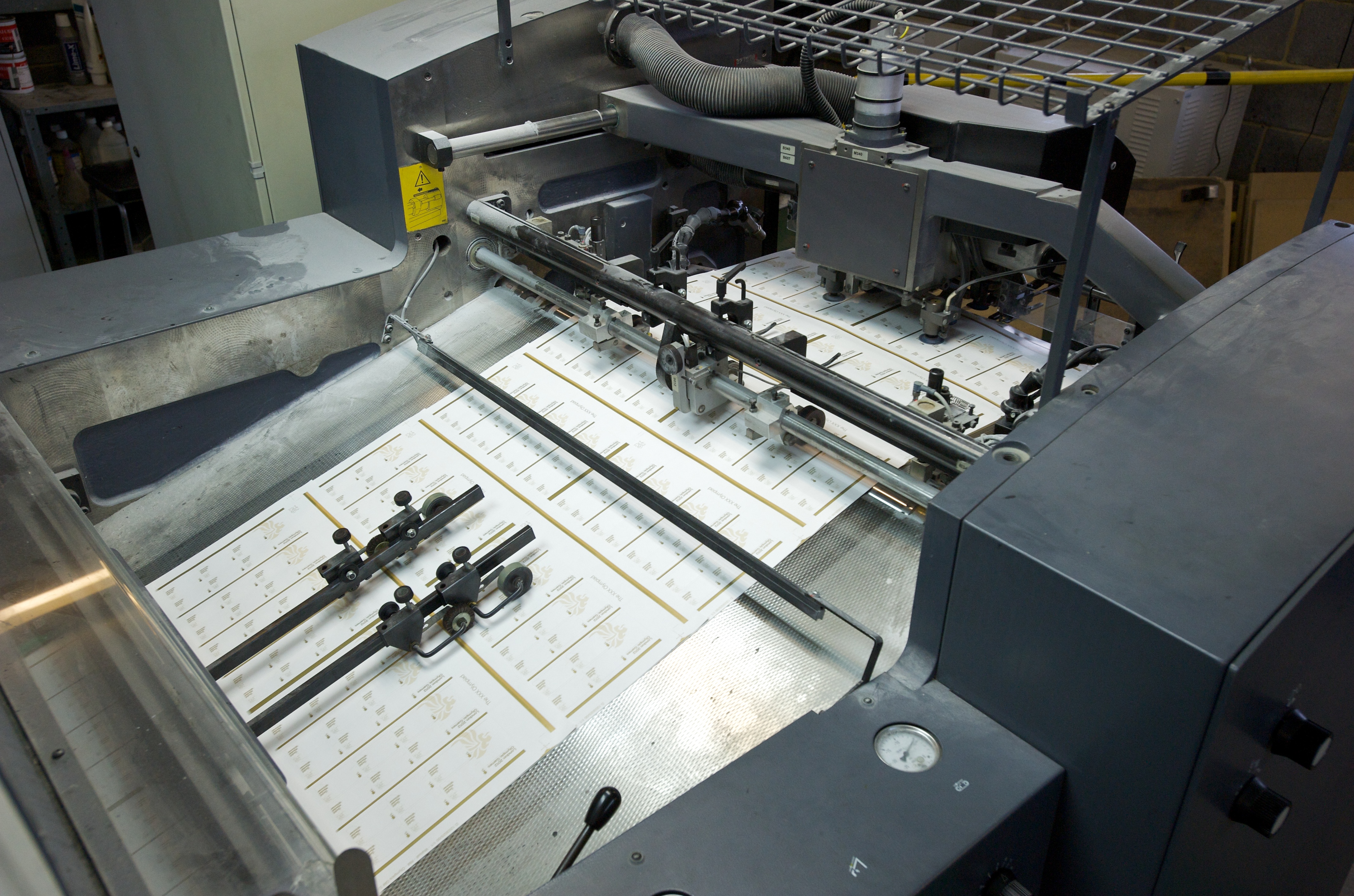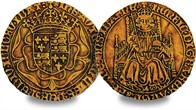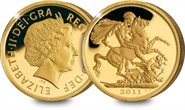Posts by Ian Glen
London 2012: most popular coins in over 40 years
The Royal Mint has revealed its London 2012 50p commemorative coins are proving more popular than any other UK circulating coin since decimalisation in 1971.
Since their release into general circulation in October 2010, The Royal Mint anticipates that more than £10 million worth, or over 70% of the coins, will be kept by people looking for a ‘free’ souvenir of London 2012. This is a huge increase on the standard loss of 2% to 3% on most other new circulating 50p coins which are removed by collectors or simply lost.
The Royal Mint has said it’s not unusual for special commemorative coins to be removed from circulation in this way but that the London 2012 coins would break all previous records.
Struck at the organisation’s headquarters in South Wales, the coins were designed by members of the public as part of a Royal Mint competition in which nearly 30,000 entries were submitted. They are the first ever UK coins to be designed by the public.
Each of the twenty-nine 50p coins features an Olympic or Paralympic sport on its reverse. These include sailing, cycling and basketball as well as less well-known sports such as handball and the Paralympic sport boccia.
The 50p coins are seen as a perfect souvenir to remember London 2012 due to their intrinsic value and quality which holds an interest and fascination for generations to come.
Royal Mail to salute gold medal winners with unique stamp issue
Within hours of a British gold medal winning performance at London 2012, Royal Mail will set about producing an exclusive Team GB issue to mark their sporting triumph. Here’s how they’ll produce Britain’s first ever ‘next day’ stamps this summer …
Printing
 Each Team GB Gold Medal Stamp issue will feature a Miniature Sheet of six stamps. To save time, sheets will be pre-printed in gold with common details such as the 1st Class value, the Queen’s head and the official London 2012 logo. The Team GB emblem and the title ‘London 2012 Olympic Games’ will also be printed in advance.
Each Team GB Gold Medal Stamp issue will feature a Miniature Sheet of six stamps. To save time, sheets will be pre-printed in gold with common details such as the 1st Class value, the Queen’s head and the official London 2012 logo. The Team GB emblem and the title ‘London 2012 Olympic Games’ will also be printed in advance.
Design
Working alongside Getty Images, the Games’ Official Photographic Agency, Royal Mail will receive a selection of images featuring the winning team or athlete as soon as possible after their win. Designers will have just one hour to choose the best action shot to fit the template and complete the artwork.
On receipt of the artwork from Royal Mail, six regional printers will then digitally overprint the athlete’s image, name and the winning event.
Distribution
The finished sheets will be collected from the printers and delivered to 500 Post Office branches across the UK for sale the morning after the gold medal win. They range from Aberdeen to Bournemouth, Belfast to Cardiff and include a large number in London.
 “All of these branches will be open on Sundays, many for the first time, during the Games to allow customers to buy the stamps as soon as they become available,” Royal Mail spokesperson. Another 4,500 Post Offices will receive the Gold Medal Stamps within the following week.
“All of these branches will be open on Sundays, many for the first time, during the Games to allow customers to buy the stamps as soon as they become available,” Royal Mail spokesperson. Another 4,500 Post Offices will receive the Gold Medal Stamps within the following week.
Royal Mail’s ‘Welcome’ Mini Sheets
To coincide with the opening of London 2012 on 27th July and the Paralympic Games on 29th August, Royal Mail will also issue two special miniature sheets. The four stamps on each sheet portray powerful images of athletes in action alongside an iconic London landmark such as the London Eye or Tower Bridge. There are
two 1st class stamps and two £1.28 stamps per mini-sheet. This is the first time a postal administration has issued a miniature sheet to mark the opening of the Paralympic Games.
Royal Mail released its first Olympic stamps in 1948, when the Games were held in London for the second time (first held in 1908). However, this will be the first time ever it has issued stamps to celebrate gold medal winners.
History of the Sovereign
The gold Sovereign is one of the most famous coins in the world. “Sovereign” is the name we give to a gold coin, originally of one pound sterling value. The first pound was struck in 1489 during the reign of Henry VII. It was a magnificent coin showing on the obverse the king sitting a throne, hence the name “Sovereign.”
The first Sovereigns
Henry VII ordered the Sovereign to be struck as part of the process to stabilise the English economy after decades of civil war. The King commissioned the great German engraver Alexander of Bruchsal to design the coin, showing Henry VII enthroned on the obverse and a Tudor rose enclosing a shield on the reverse. Its value was 240 silver pennies or twenty shillings. This was the first Sovereign – it was struck in 23 carat (95.83% fine) gold.
Debasement and replacement
King Henry VIII increased the sovereign’s value from 20 shillings to 22 shillings then 22 shillings and 6d. His son, Edward VI fixed the value at 20 shillings and also issued a half sovereign, a “Fine Sovereign” of 30 shillings and a double sovereign. After his death in 1553, his half sister, Queen Mary issued only a “Fine Sovereign” of 23¾ carats. Mary died in 1558 and her successor, Elizabeth I re-introduced a “standard sovereign” of 22 carats, worth 20 shillings, circulating alongside the fine sovereign. James I eliminated the fine sovereign and introduced a smaller, lighter sovereign of 22 carat fineness in 1604. This was to be the last sovereign struck in England for 213 years.
Unite, Laurel, Broad and Guinea
After the Sovereign there followed a succession of coins, of roughly sovereign value. First came the “Unite” of one pound value. It was so called in honour of the uniting of the kingdoms of England and Scotland. In 1612 the Unite was revalued at 22s before being replaced in 1619 by the “Laurel.” It survived the Civil War and was circulated during the Commonwealth, although a smaller 20 shillings coin, “the Broad”, was briefly issued in 1656. The Unite was issued for two years by the restored Charles II but was replaced by the machine-made “Guinea” (so called because it used gold from Guinea, West Africa) in 1668.
The Sovereign reigns supreme
In 1809 The Royal Mint was moved from the Tower of London to a new site on Tower Hill. In 1813 the last Guinea, with a value of 21 shillings, was struck by The Royal Mint but a huge transformation in how British coins were produced was about to take place. Using the new steam-powered minting machines of Boulton and Watt, the Mint could now produce superior coins more quickly and on an industrial scale. The Mint also now issued coins with a face value greater than their intrinsic value – the world’s first “token” coinage – and in 1817 came the return of the gold Sovereign after 213 years. On its reverse was the iconic engraving of St George and the Dragon by the brilliant Italian engraver Bendetto Pistrucci. This is essentially the modern gold Sovereign we know today, minted to 22 carat (91.7%) fineness, 22.05 mm in diameter and weighing 7.988 g.
The George & Dragon design continued to be used exclusively on the reverse of Sovereigns until 1825, when a shield design was introduced. The shield continued to be used intermittently throughout the reigns of George IV, William IV and Queen Victoria. As the British Empire spread across the globe, the sovereign went with it, accepted and trusted in even the most remote parts of the world. In 1855 the Sydney Branch of The Royal Mint was established. Uniquely, its Sovereigns (identified by the mintmark “S”) were completely different in design to the British originals. Other Royal Mints striking Sovereigns were opened at Melbourne, Perth and Ottawa, Canada.
A new life for the Sovereign
In 1917, under pressure of the war effort, The Royal Mint stopped production of the gold sovereign, replacing it with paper currency for everyday circulation. Although the Mint produced some Sovereigns in 1927 and proof sets in 1937 and 1953, this effectively marked the end of the Sovereign as currency. However, in 1957, in response to demand from collectors and investors, The Royal Mint issued bullion sovereigns almost every year until 1968, resuming regular production in 1974. In 1979 the Mint issued proof versions, which were so popular the practice continues to this day.
In 1989 the 500th anniversary of the sovereign was marked by a special commemorative proof issue, while the Queen’s 2002 Golden Jubilee saw the shield design used, in modified form, on the reverse of a Sovereign for the first time since 1887. Most recently, the 2012 Sovereign featured a new reverse design by Paul Day to mark the Queen’s Diamond Jubilee. Over the past decade bullion and proof Sovereigns have proved a sound investment. As long as there’s a pound, it seems likely we’ll still have a Sovereign.








